
Things we like
- Funky design/road presence
- Ease of use
- Low-speed ride quality
- Practical
Not so much
- Smartphone mirroring is glitchy
- Price premium for some active safety
- Rebound control left wanting
Hyundai is kicking goals, scoring tries and adding to its ace count. Whatever sporting analogy you want to use, the South Korean giant is winning.
It often has numerous models within the top 20 of Australia’s VFACTS sales charts, so there’s little room for underperforming fat in the line-up.
And with consistent podium places each month within Hyundai’s own pecking order, the Kona isn’t at risk of becoming unwanted love handles anytime soon.
It’s no surprise, then, to find out that the Kona is a strong seller Down Under. In fact, in a turbulent 2020, Hyundai’s small SUV almost eclipsed the hugely popular Mitsubishi ASX.

However, with a refreshed line-up and an already strong start to 2021, the Kona looks set to challenge the ASX for top spot in the small SUV segment.
A big part of that projected success will be down to significant updates for a model originally released in 2017. It sees styling, mechanical and technology changes throughout the four model grades that make up the Kona range.
? Hello from the future!
There’s a new-generation Kona in Australia now, and you can find our news and reviews at the link below.
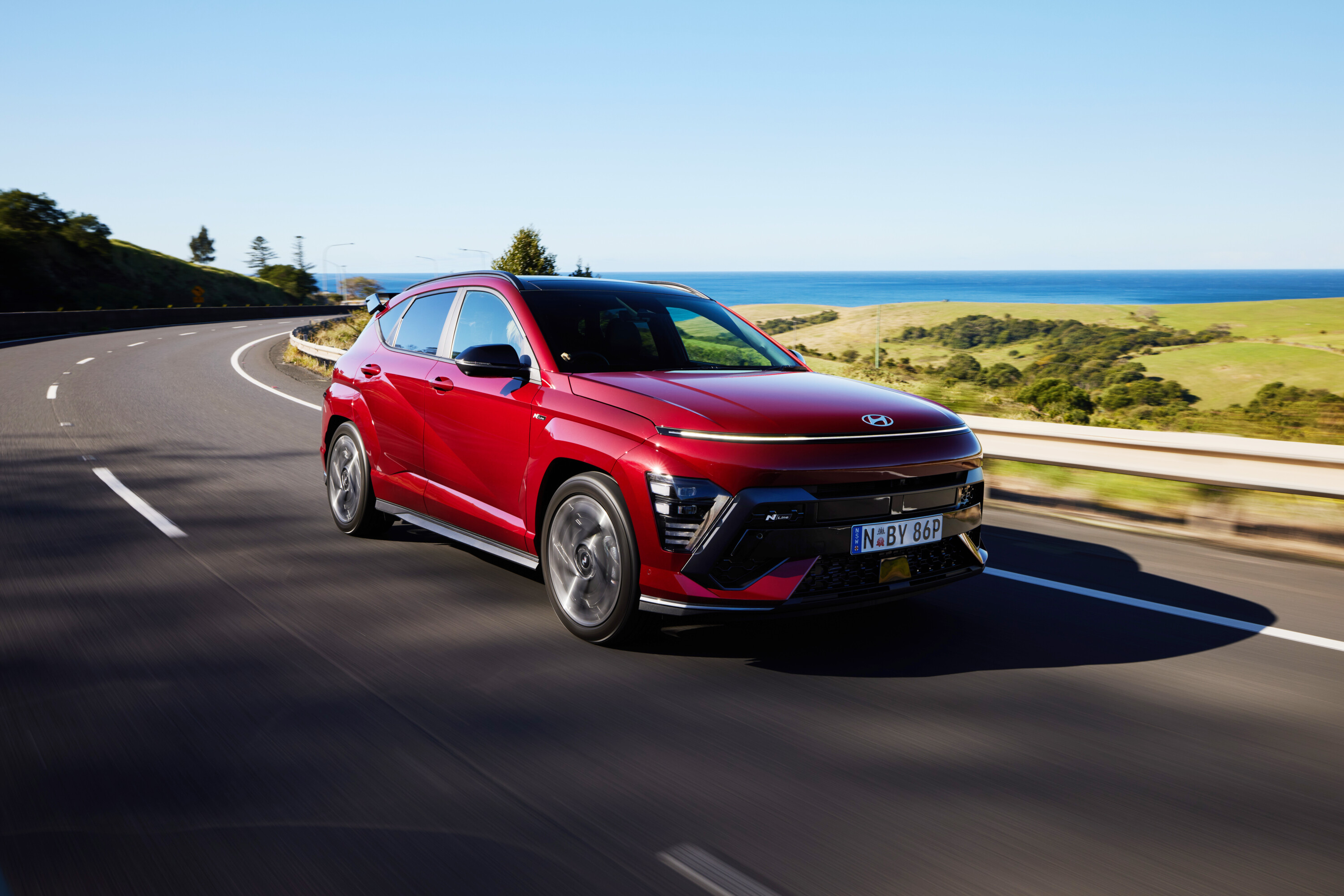
Review continues…
Prices are up across the board, but more features have become standard and the new 2.0-litre four-cylinder petrol engine gains a continuously variable transmission (CVT).
It’s the second-from-the-bottom $28,200 Active variant that we’re focusing on here.
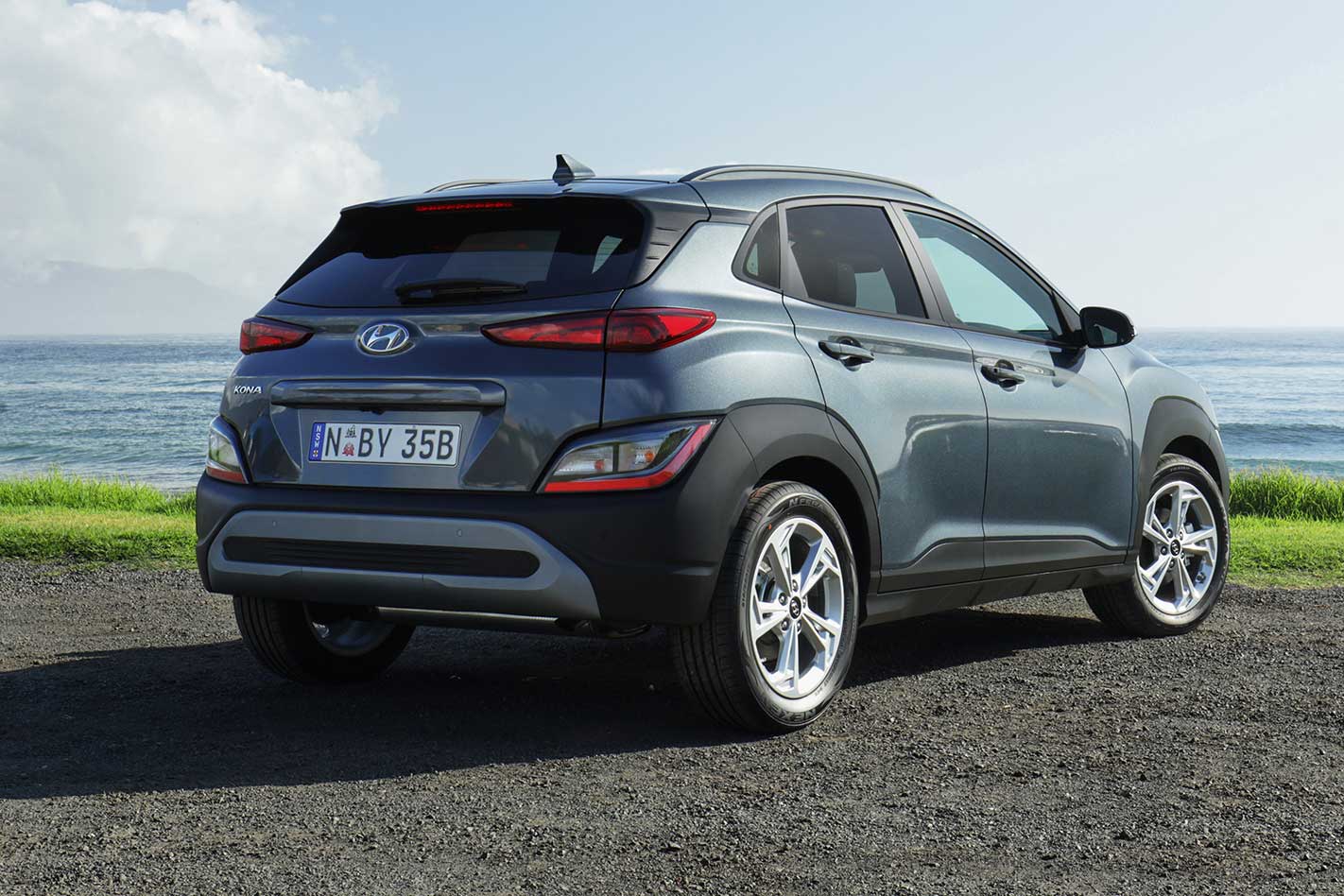
An electronic park brake replaces the conventional hand-operated unit, while wireless phone charging pairs with the smartphone mirroring for a potentially cable-free cabin – perfect for those who rue clutter.
The Active gains leather upholstery – which includes the seats, steering wheel and gear selector – while the alloys are 17-inch items and rear parking assist is standard.
New for this model grade in 2021 are map pockets, rear privacy glass and heated/power-folding mirrors, which are useful on tight streets given the Kona fits the city-dwelling-crossover genre.
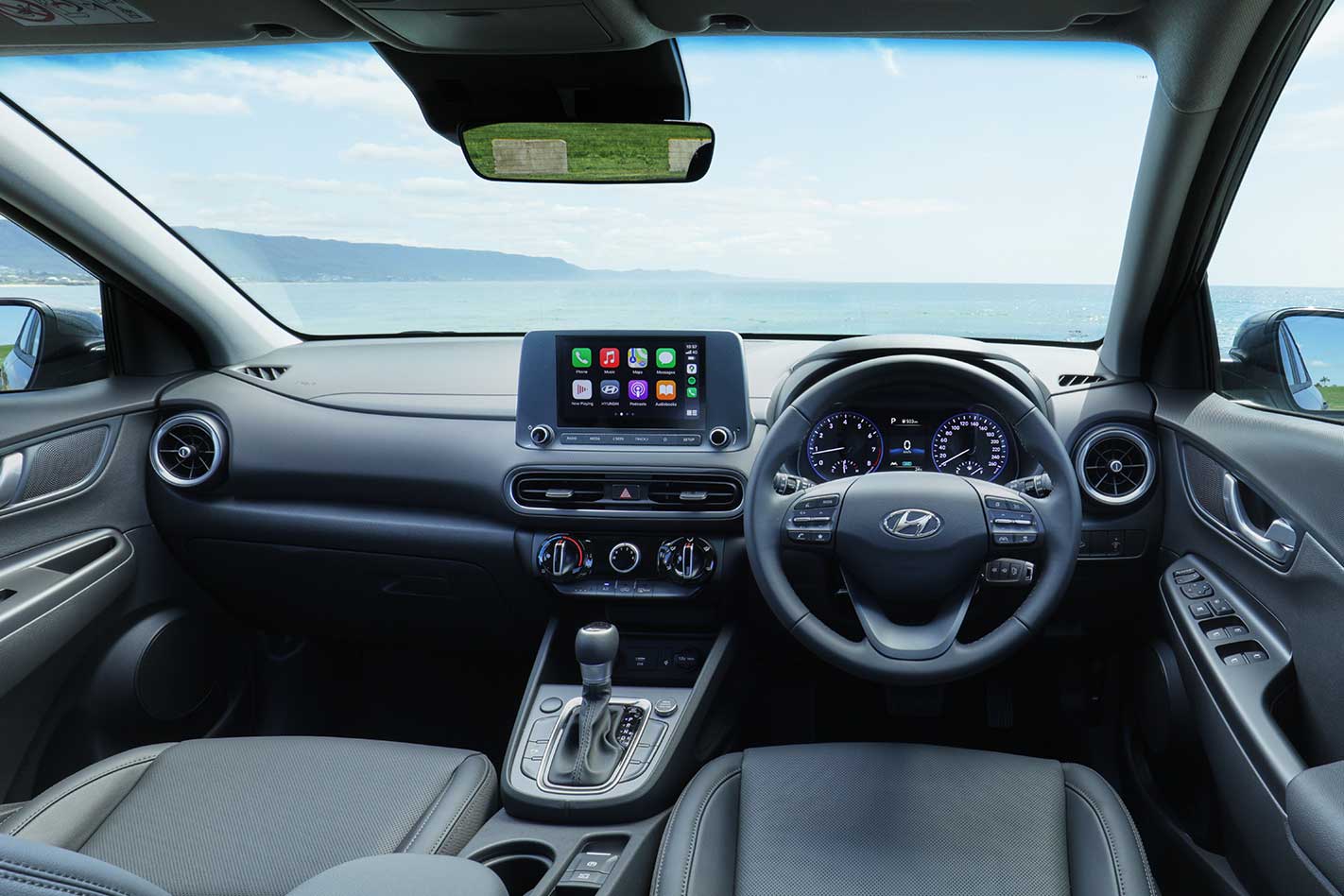
Servicing for the Active is every 12 months/15,000km (whichever comes first) and the warranty is five years/unlimited kilometres.
Design wise, the biggest changes are seen outside. The Kona gains a distinctive new face with a big grille and LED daytime running lights placed atop the conventional headlights – a design theme Hyundai has been shifting towards for its SUVs.
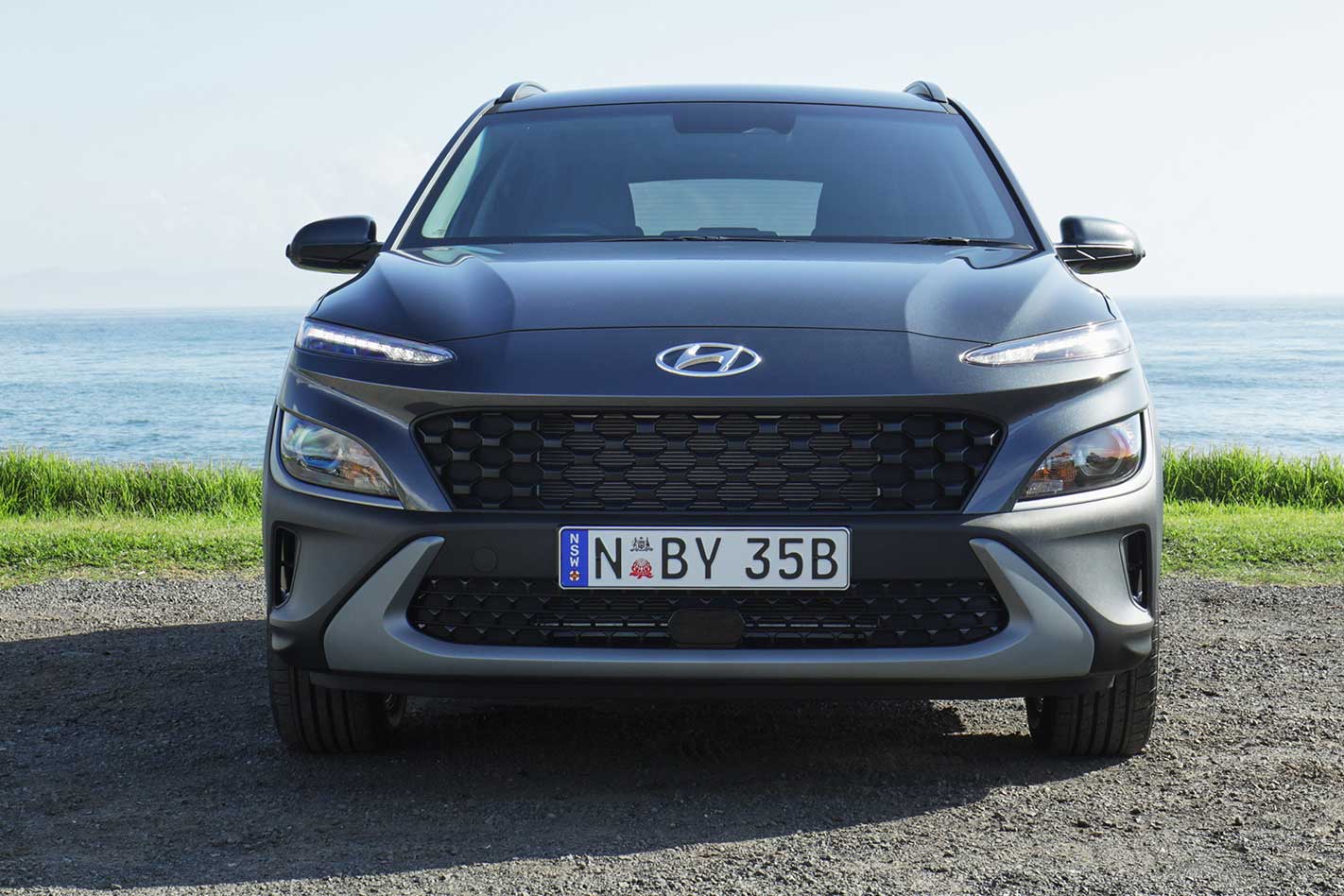
Inside the differences are harder to pick, although the Elite, Highlander and N Line variants gain a new 10.25-inch infotainment display and the latter two also score a TFT instrument cluster of the same size.
Ergonomically the layout is sound, with good all-round vision and loads of adjustment to the seating/driving position. The multi-function steering wheel is easy to use and general NVH levels are OK despite the Active missing out on extra sound deadening available in more expensive grades.
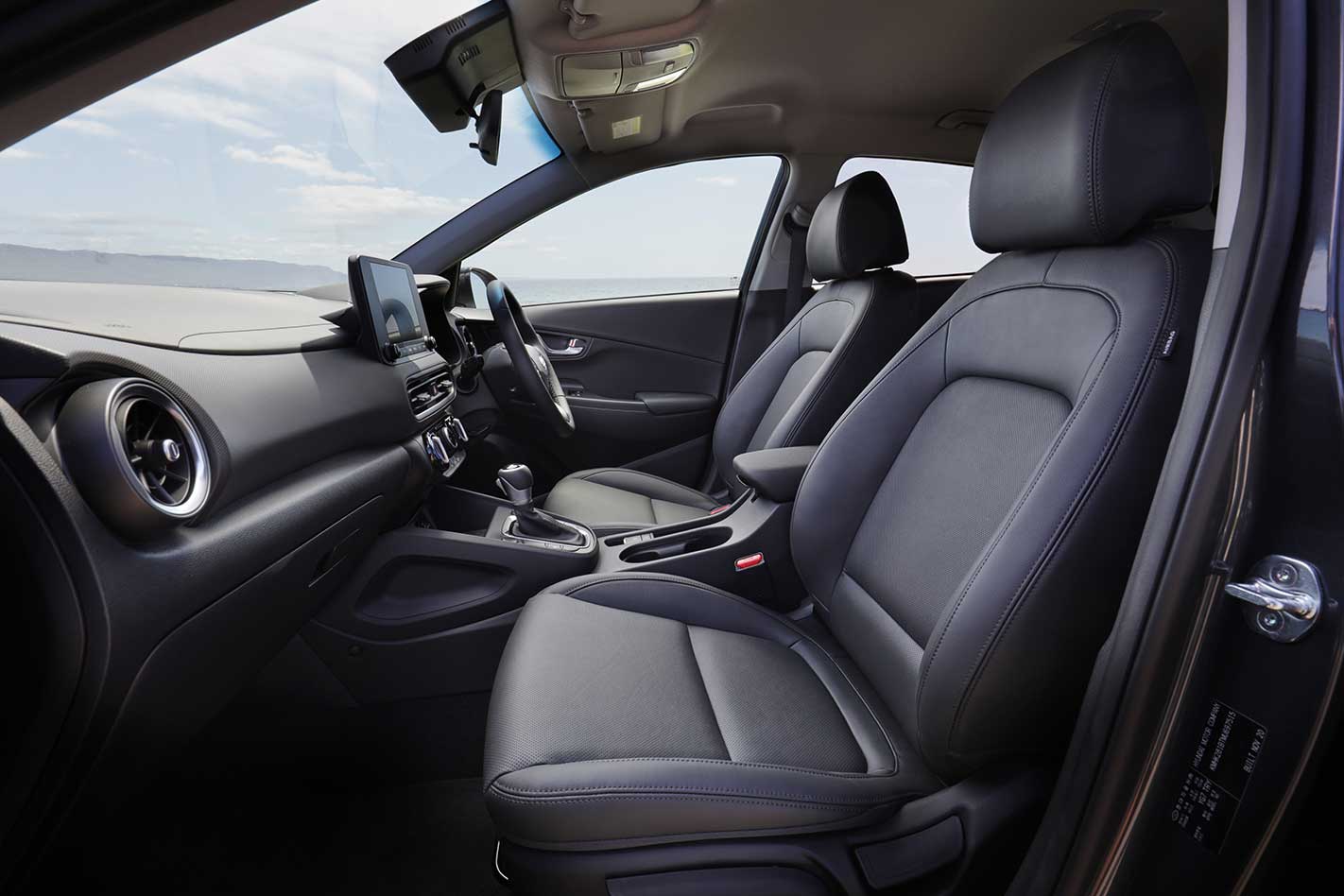
Call it a first-world problem, but having to actually use a key to start a car has become and automotive oddity.
You also have to pay more to gain extra safety kit like blind-spot collision-avoidance assist, high-beam assist, rear cross-traffic collision-avoidance assist and safe-exit warning.
Annoyingly, the smartphone mirroring is glitchy – and that’s being rather pleasant about it. While this isn’t an issue specific to just Hyundai with other wireless systems having a tendency to drop out, too, the Kona’s performance with Apple CarPlay was very poor.
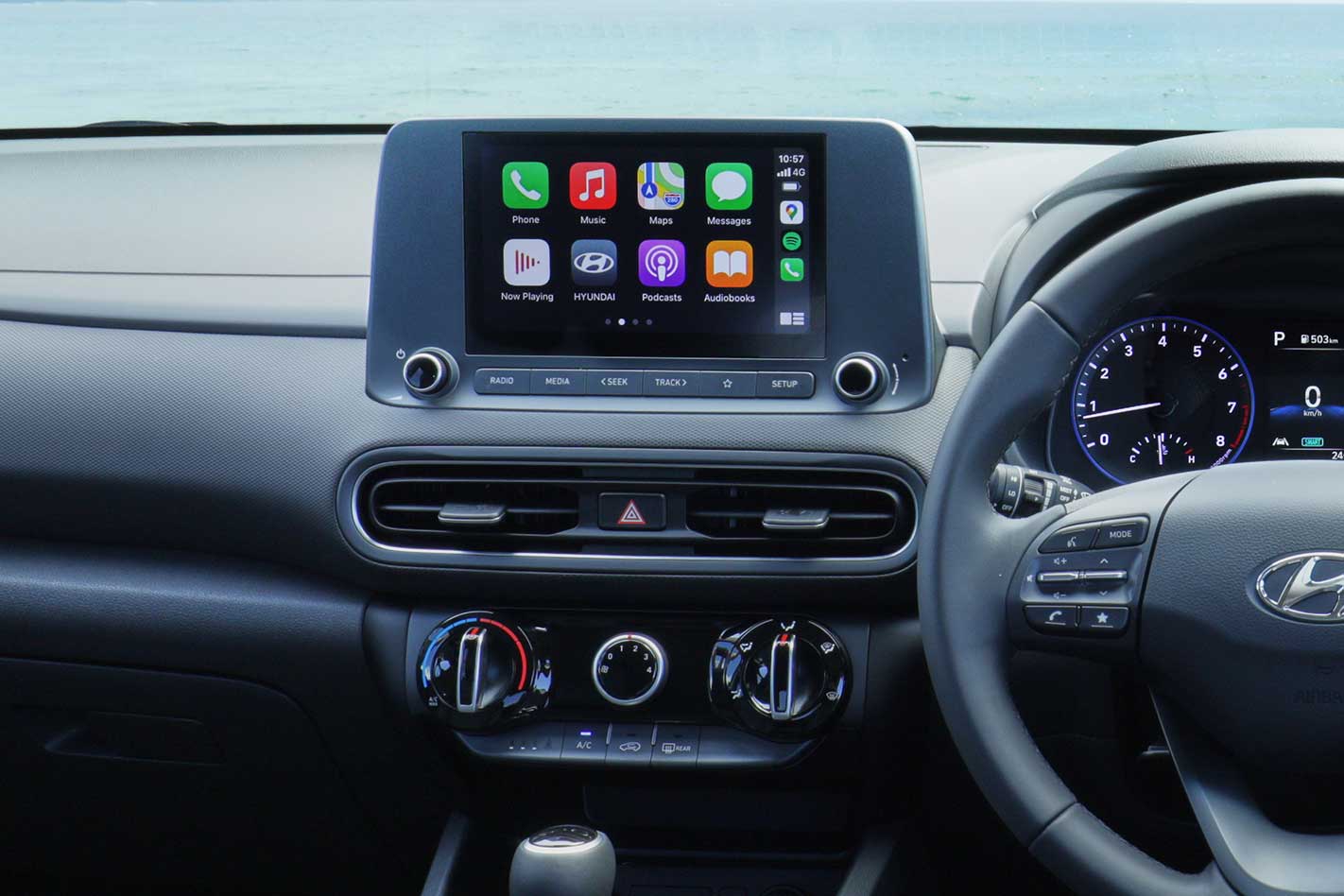
Given the Active also doesn’t have in-built sat-nav, this became an issue on a planned weekend trip. A software update from Hyundai needs to be in the works to rectify this – and quickly.
Practicality proves far stronger than the wireless connection. Room for heads, shoulders knees and toes is at comfortable levels front and rear – with a little bit of compromise required if you’re four-up with adults – while the leather seats offer plush cushioning.

The rear doors offer small stowage areas, while the transmission tunnel isn’t too intrusive if you need to carry a fifth passenger. ISOFIX points are located in the outboard pews.
Cargo capacity is 374 litres and the rear seats fold flat if you need to transport larger items home from the weekend Bunnings or IKEA trip. With a raised boot floor there’s also no lip with the seats stowed, meaning you can slide items straight through.
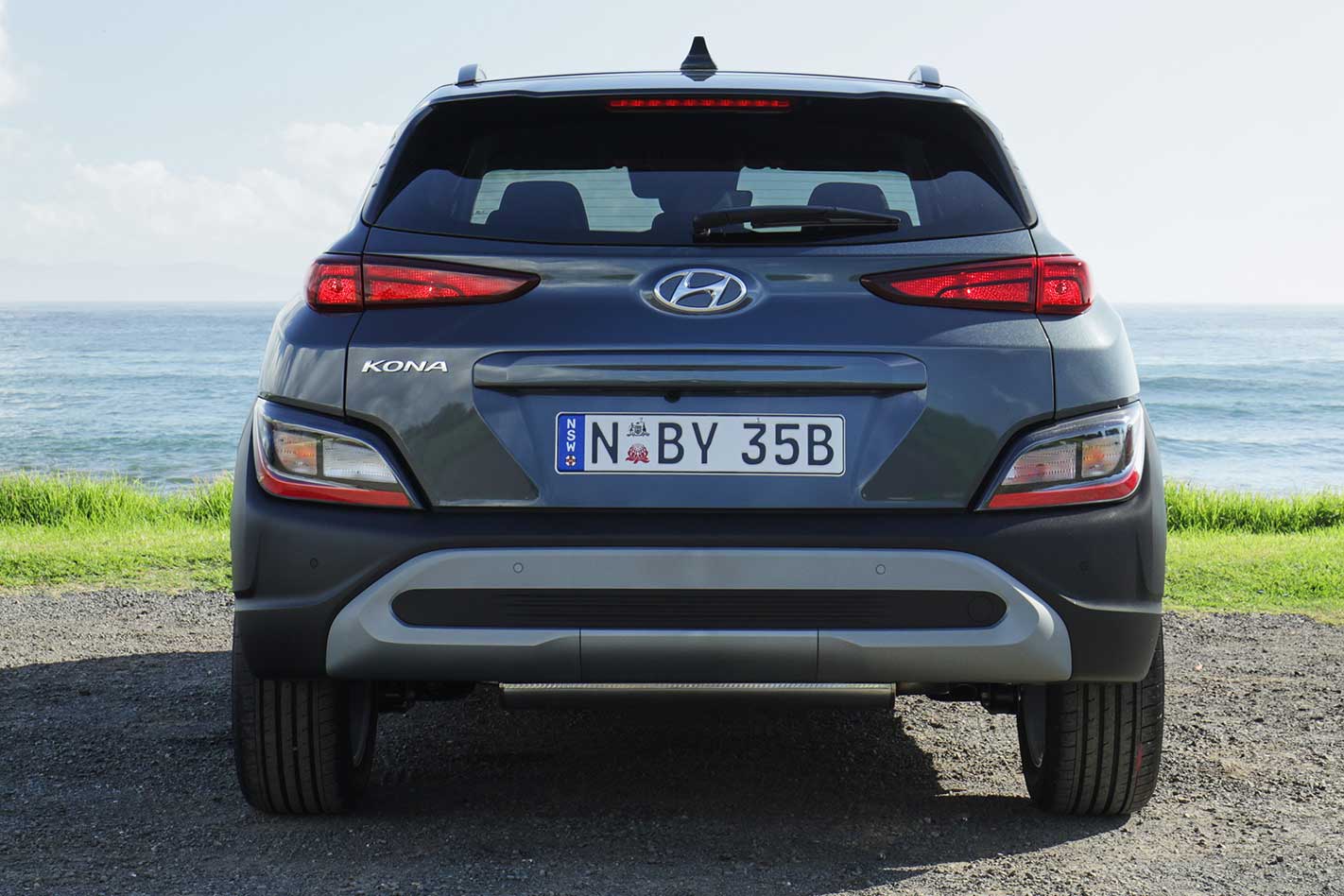
Mechanical changes are actually quite extensive with both the engine and transmission receiving attention. The SmartStream 2.0-litre (1999cc) four-cylinder engine is a part of the ‘Nu’ family, but it doesn’t really feel ‘new’.
Sans forced induction, and especially when compared with Hyundai’s punchy ‘Gamma’ 1.6-litre turbo four-pot, it can be left wanting for power and torque – especially given both outputs are developed high in the rev range.
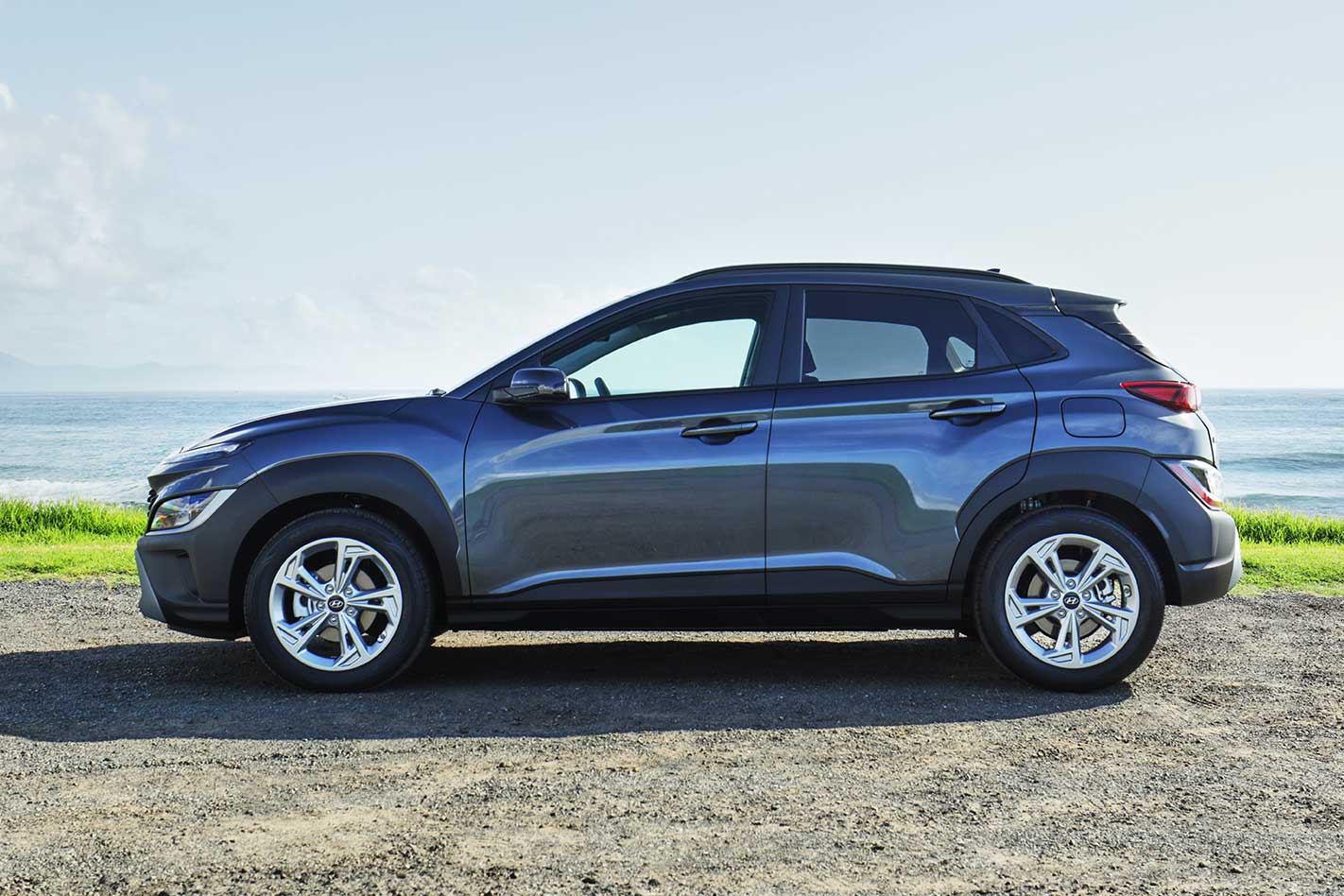
With stepped ratios to mimic a conventional torque-converter automatic, the CVT actually works well with the naturally aspirated four-cylinder.
It largely eschews the perching sensation, resisting the urge to hold revs at a constantly high rpm under heavy load, and it even offers a pseudo manual mode (sans steering-wheel-mounted paddles).
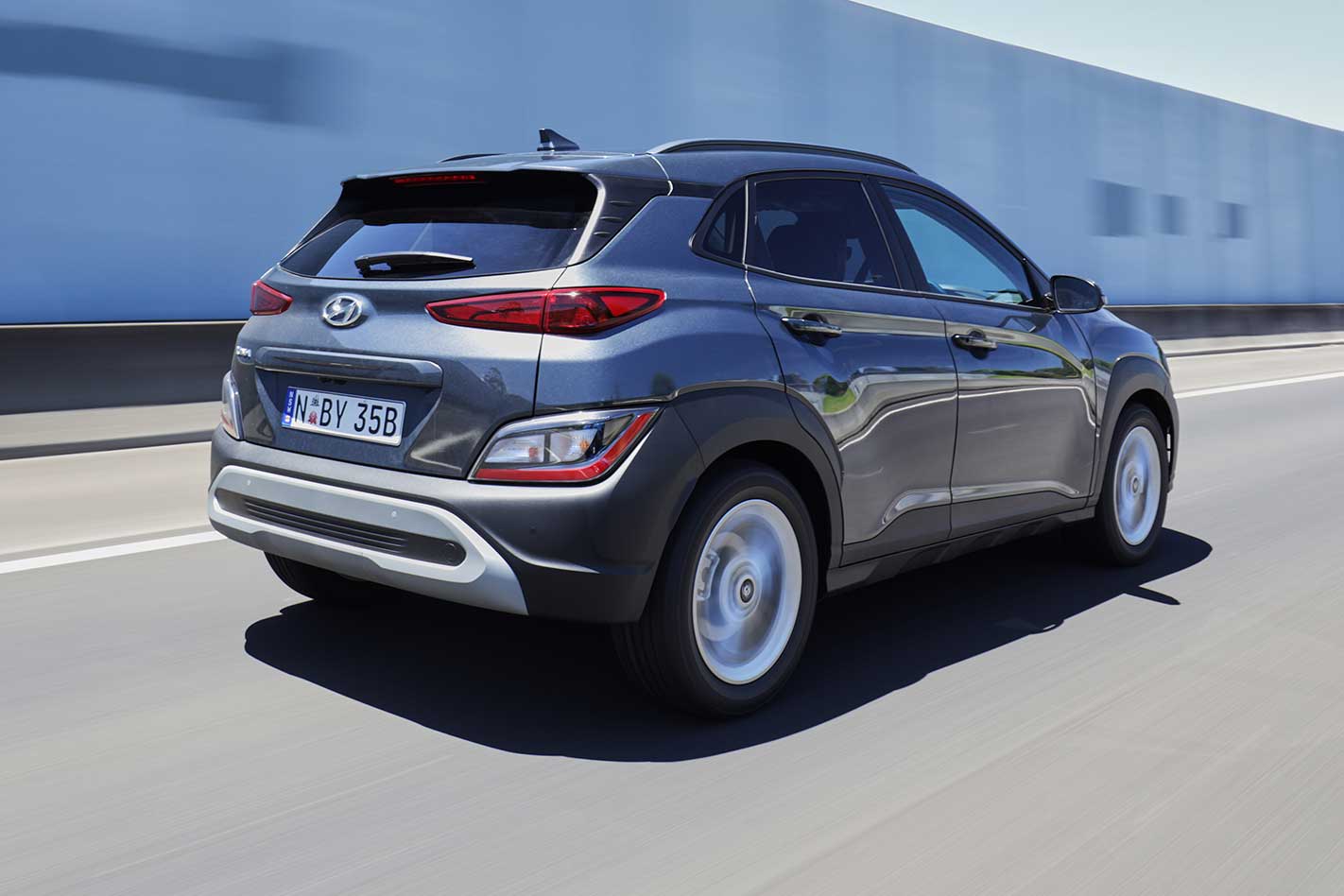
An injection of torque would not only help driveability, but also aid the fuel economy. However, being able to fill up on 91RON fuel is a bonus with constantly fluctuating petrol prices.
While Hyundai hasn’t played with the spring rates or dampers, the 2021 Kona feels a little suppler than before – especially on smaller rims with chubbier 215/55 rubber. There’s a veneer of firmness, which is appreciated on smooth roads with enticing corners, but the ride quality doesn’t cross over to the harsh side.
The Active keeps body roll in check, however, the rebound calibration of the dampers needs work as the Kona is, ahem, active in terms of vertical movements over smooth undulations. Adding weight via extra passengers and luggage only exacerbates the lack of control.
Which is a shame, because without this issue the Kona displays pleasing dynamics, bearing in mind its small-SUV premise. And that’s despite the fact the Active uses the lower-spec torsion beam rear suspension over the N Line’s multi-link setup.
Traction isn’t an issue on-road, while the front-wheel-drive layout has help off-road with dedicated Snow, Mud and Sand traction modes – although there is only 177mm of ground clearance.
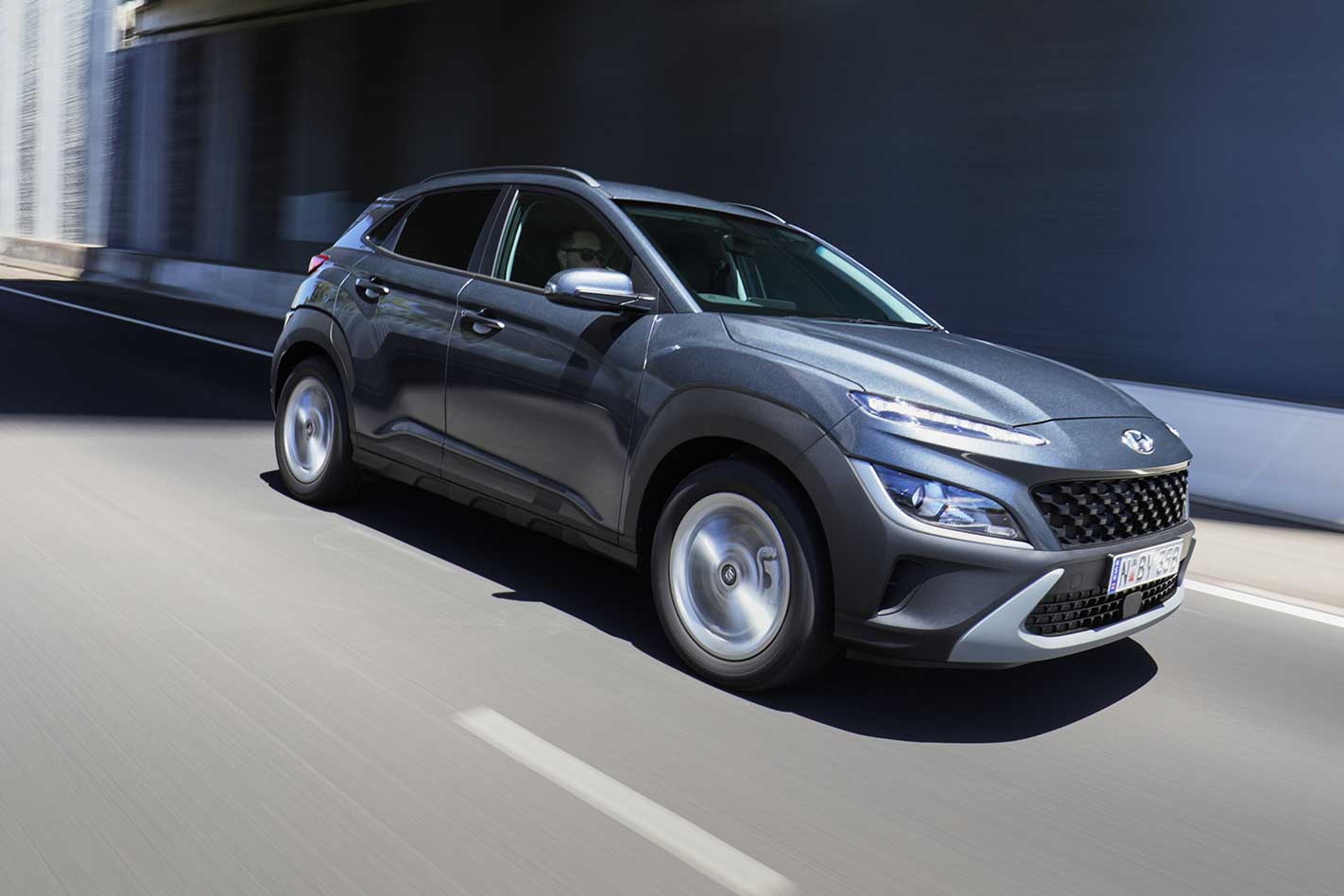
Ultimately, the Active grade makes a curious case for itself. It misses out on some key equipment and the 2.0-litre powertrain is best described as adequate. Nor is it especially frugal.
The N Line offers more grunt and all-wheel drive, while the all-electric EV solves the consumption issues. However, the Active pleases on a monetary front more so than those options, as does its funky persona and juxtaposing pragmatism.
Hyundai’s half-time refresh has given the Kona enough of a second wind to compete in the sales race.
Specifications
- Body: 5-door, 5-seat SUV
- Drive: front-wheel
- Engine: 1999cc inline-4, DOHC, 16v
- Bore/stroke: 81.0 x 97.0mm
- Compression: 12.5:1
- Power: 110kW @ 6200rpm
- Torque: 180Nm @ 4500rpm
- 0-100km/h: 9.4sec (estimated)
- Fuel consumption: 6.2L/100km (combined/claimed)
- Weight: 1280kg
- Power/weight: 86kW/tonne
- Transmission: Continuously Variable Transmission
- Suspension: MacPherson struts, coil springs, anti-roll bars (f); torsion beam, coil springs, anti-roll bars (r)
- L/W/H: 4205/1800/1550mm
- Wheelbase: 2600mm
- Tracks: 1563/1572mm
- Steering: electrically assisted rack-and-pinion
- Brakes: 280mm ventilated discs, single-piston calipers (r); 284mm solid discs, single-piston calipers (r)
- Wheels: 17.0 x 7.0-inch (f/r)
- Tyres: 215/55 R17 94V (f/r) Nexen N’Fera SU1
- Price: $28,200
Things we like
- Funky design/road presence
- Ease of use
- Low-speed ride quality
- Practical
Not so much
- Smartphone mirroring is glitchy
- Price premium for some active safety
- Rebound control left wanting




